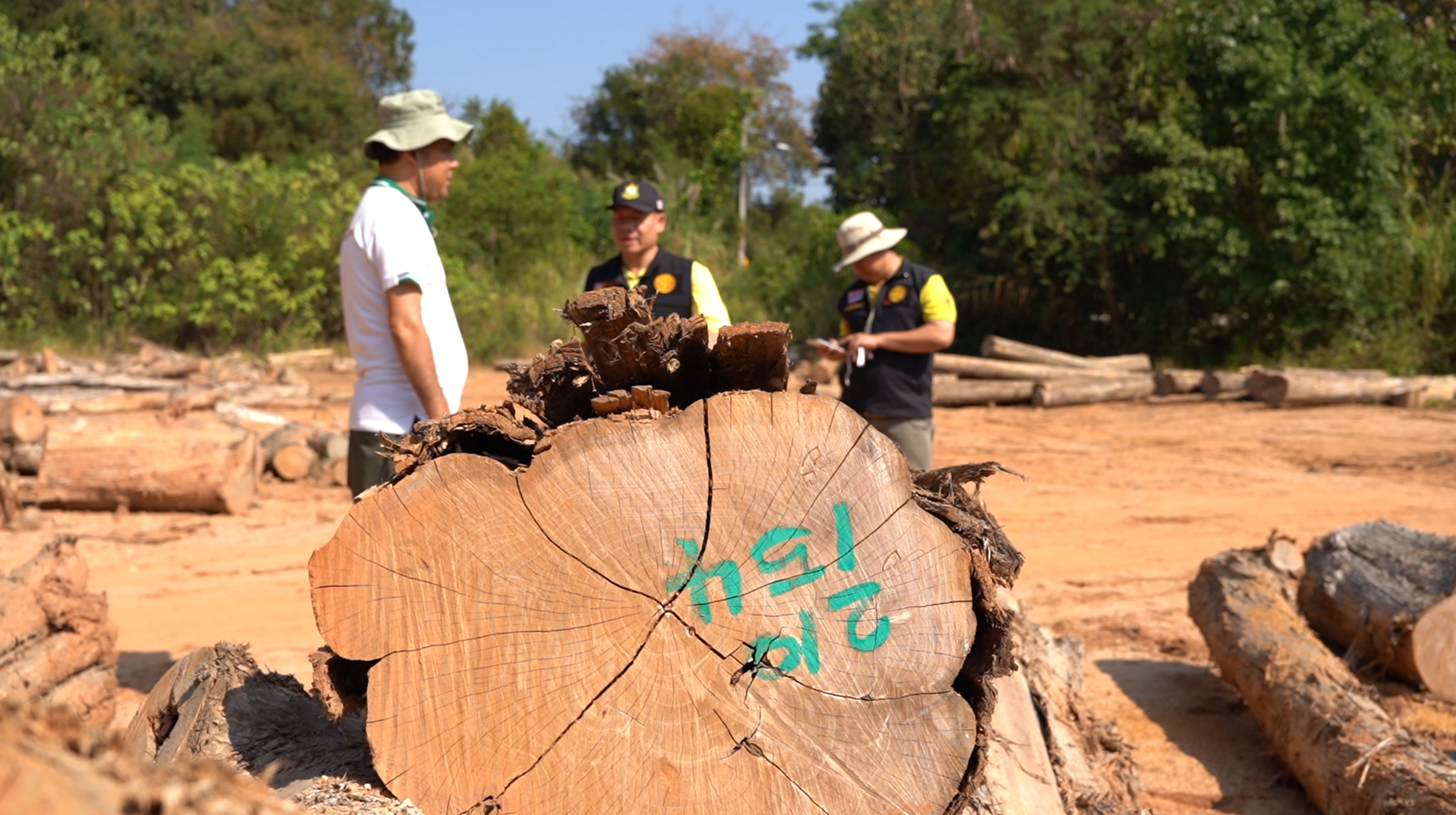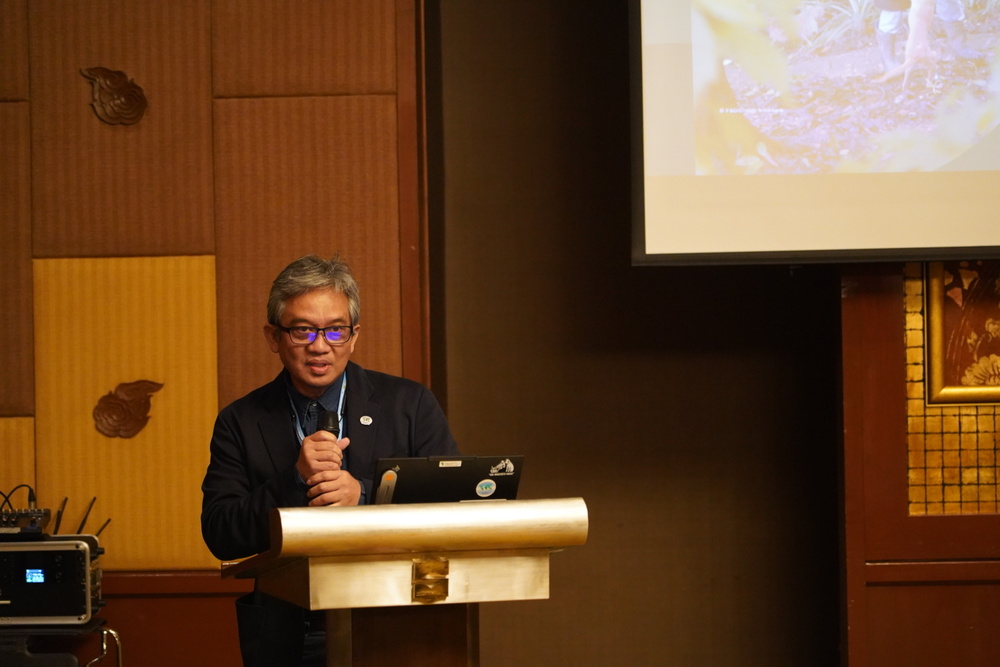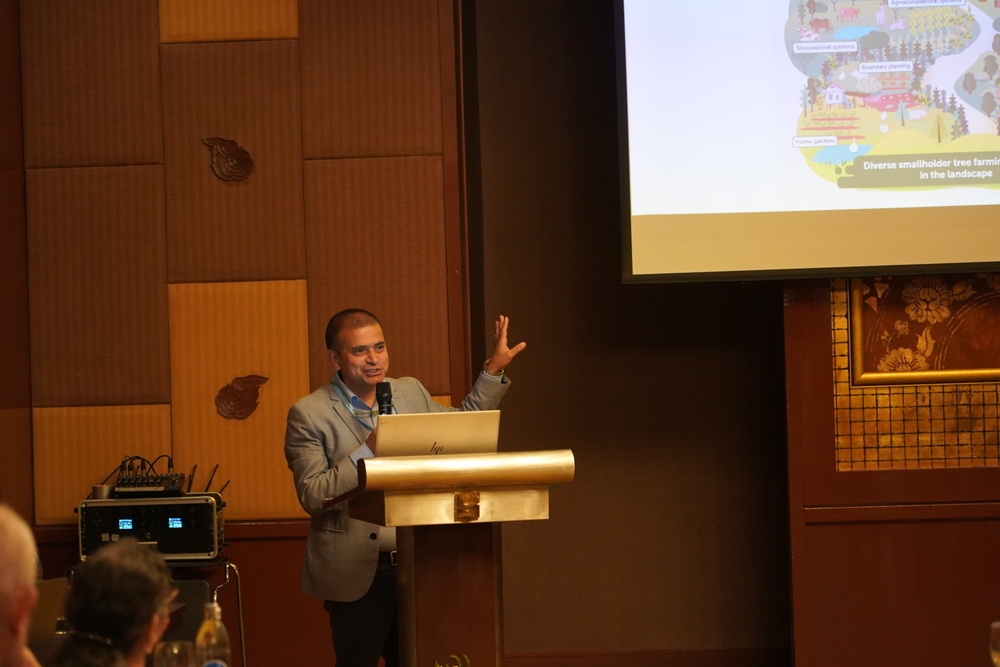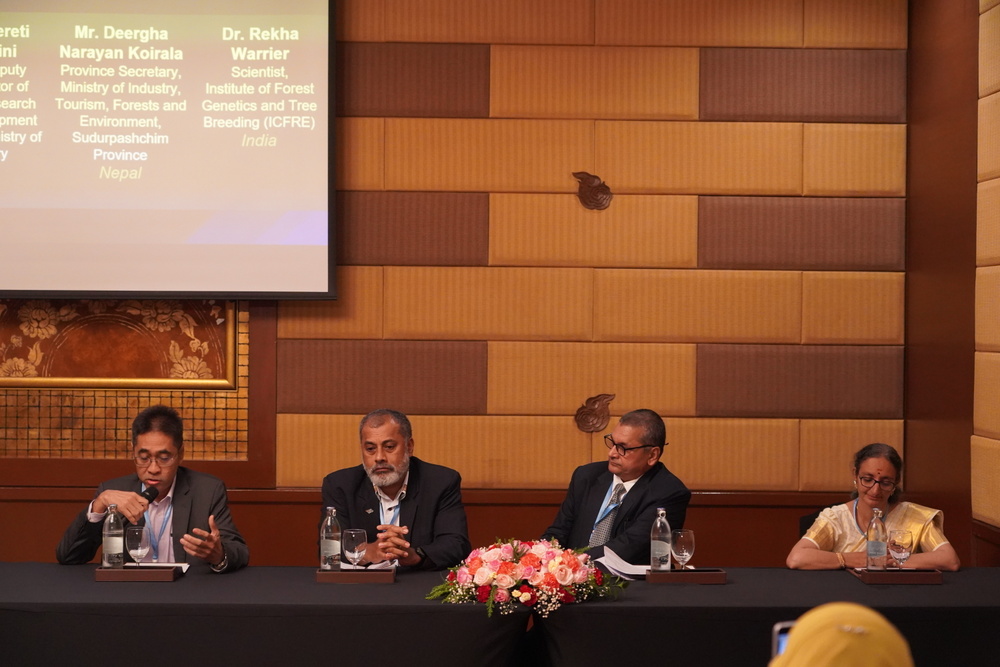APFW2025: l’arboriculture de petite échelle, une «révolution silencieuse» en Asie-Pacifique
18 novembre 2025, Chiang Maï

Les petits arboriculteurs apparaissent comme des acteurs essentiels pour garantir un approvisionnement durable en bois dans la région Asie-Pacifique. © OIBT
Les petits arboriculteurs apparaissent comme des acteurs essentiels pour garantir un approvisionnement durable en bois dans la région Asie-Pacifique, selon les spécialistes réunis lors d'un événement intitulé «L’arboriculture de petite échelle en Asie-Pacifique: défis et opportunités à venir» organisé en marge de la Semaine forestière de l’Asie et du Pacifique (APFW) 2025.
Co-organisée par l'Organisation internationale des bois tropicaux (OIBT), l'Organisation des Nations Unies pour l'alimentation et l'agriculture (FAO) et le Centre pour la recherche forestière internationale et l'agroforesterie mondiale (CIFOR-ICRAF), il a réuni des décideurs politiques, des chercheurs et des praticiens de toute la région afin d'examiner comment les petits exploitants pouvaient favoriser une production durable de bois dans un contexte de demande mondiale croissante.

À l’ouverture, Robert Nasi, Directeur général du CIFOR et Directeur scientifique du CIFOR-ICRAF, a parlé de l’arboricuture de petite échelle comme s’agissant d’une «révolution silencieuse» qui transforme les systèmes d'approvisionnement en bois dans toute la région. L'agroforesterie et l’arboriculture de petite échelle fournissent non seulement du bois, mais procurent aussi des revenus, une sécurité alimentaire et des services écosystémiques, a-t-il déclaré, mettant en avant la plurifonctionnalité et la résilience de ces systèmes.

Représentant l'OIBT, Jennifer Conje, Directrice de la gestion forestière, a souligné les efforts constants de l'OIBT visant à renforcer les chaînes d'approvisionnement légales et durables en bois avec de petits arboriculteurs en Indonésie, au Viet Nam, en Malaisie, en Thaïlande et en Inde afin de répondre à la demande croissante en bois et de garantir que les petits producteurs tirent profit de cette croissance des marchés.

Dans sa présentation, Tetra Yanuariadi, Chef de projets à l'OIBT, a passé en revue les tendances actuelles et projetées en matière de production et de commerce de bois en Asie et dans le Pacifique. Il a noté que si la production industrielle de bois ronds dans la région avait certes augmenté de 45 % au cours des deux dernières décennies, la demande continuait toutefois de dépasser l'offre. «Au fur et à mesure que la production des forêts naturelles diminue, l’arboriculture de petite échelle et l'agroforesterie seront essentielles pour répondre à la demande future en bois», a-t-il déclaré.
Cet événement a également marqué le lancement d'une nouvelle publication de la FAO et du CIFOR-ICRAF intitulée Agroforestry for wood production – Insights from multifunctional smallholder tree-farming systems in Asia and the Pacific (L'agroforesterie au service de la ligniculture – Perspectives issues de régimes arboricoles plurifonctionnels de petite échelle en Asie-Pacifique». Préparé en concertation avec l'OIBT et d'autres partenaires, cet ouvrage recense les conditions et les stratégies propices à l'amélioration de la contribution des petits exploitants à l'approvisionnement durable en bois, tout en alimentant les moyens de subsistance ruraux et les services écosystémiques.

Himlal Baral, du CIFOR-ICRAF, et Faustine Zoveda, de la FAO, ont présenté les conclusions du rapport, soulignant que les petits exploitants géraient des millions d'hectares de régimes arboricoles à travers l'Asie. «Rien qu'en Indonésie, les petits exploitants gèrent plus de trois millions d'hectares de régimes arboricoles», a indiqué M. Zoveda. «Au fur et à mesure que les plantations industrielles ralentissent et que la production en forêt naturelle diminue, la contribution des petits exploitants sera de plus en plus essentielle pour répondre de manière durable aux besoins en bois de la région.»

Des panélistes venus d'Indonésie, de Fidji, du Népal et de l’Inde ont partagé leurs expériences nationales et leurs points de vue sur les défis et les opportunités liés à l’arboriculture de petite échelle.
- L'Indonésie a présenté son ambitieux projet visant à étendre la foresterie communautaire et sociale à 12,7 millions d'hectares à l’horizon 2030.
- Fidji a présenté son initiative «30 millions d'arbres en 15 ans», soulignant le rôle des propriétaires fonciers autochtones et des petits exploitants agricoles dans la réalisation de ses objectifs de reboisement.
- Le Népal a souligné comment les initiatives communautaires et privées en matière de foresterie, soutenues par la FAO et le Fonds vert pour le climat, renforçaient la résilience et alimentaient les moyens de subsistance dans la région de Chure.

Pour clore cette manifestation, Sheila Wertz-Kanounnikoff, Responsable principale des forêts à la FAO, a mis en avant qu’il était essentiel de soutenir les petits exploitants agricoles pour répondre à la demande croissante en bois tout en préservant les forêts et les moyens de subsistance. «Les régimes des petits exploitants sont diversifiés et résilients, a-t-elle déclaré. Ils offrent des solutions concrètes au déficit d'approvisionnement en bois de la région, mais un soutien politique continu, un accès au marché et des investissements sont essentiels pour libérer tout leur potentiel.»
L'événement s'est conclu par un appel à une collaboration plus étroite entre les pouvoirs publics, le secteur privé et les partenaires au développement afin de développer l’arboriculture de petite échelle dans le cadre d'une économie du bois durable, inclusive et résiliente au changement climatique dans la région Asie-Pacifique.